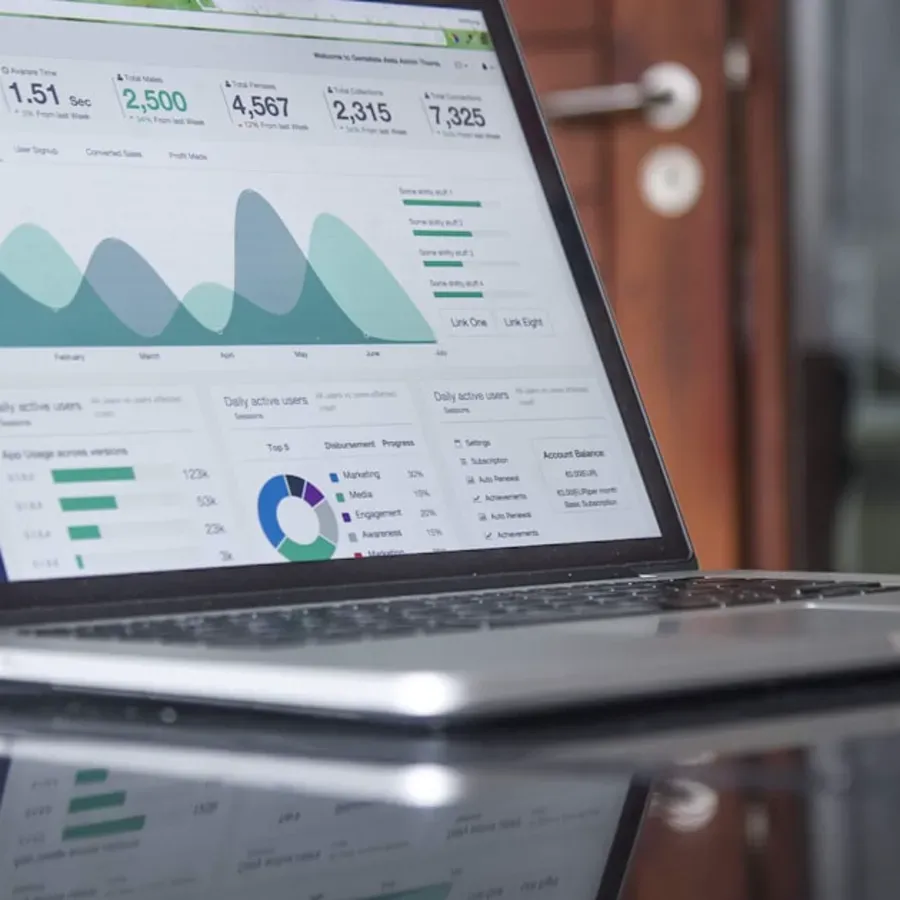
Choosing the Right CMS: Why Your Platform Decision Matters
Your Content Management System (CMS) is the foundation upon which your entire website is built. This critical technology choice impacts everything from development speed and costs to long-term maintenance requirements, security posture, scalability potential, and user experience. In 2025, three open-source platforms dominate the CMS landscape: WordPress powers 43.2% of all websites globally, Drupal runs 1.3%, and Joomla accounts for 1.7% according to W3Techs. While WordPress's market dominance is undeniable, each platform brings unique strengths and trade-offs that make them ideal for different use cases, project requirements, and organisational needs.
Selecting the wrong CMS can haunt your project for years, resulting in frustrated developers struggling with platform limitations, administrators finding basic tasks unnecessarily complex, users experiencing poor performance or confusing interfaces, security vulnerabilities that require constant vigilance, expensive migration projects when you eventually outgrow the platform, and missed opportunities because your CMS cannot support needed functionality. Conversely, choosing the right CMS accelerates development, reduces ongoing costs, provides flexibility to evolve with changing requirements, and delivers excellent experiences for both content creators and end users.
This comprehensive comparison examines WordPress, Drupal, and Joomla across every dimension relevant to your platform decision. We'll explore ease of use and learning curves, available features and extensibility, performance and scalability characteristics, security considerations and track records, development experience and ecosystem maturity, hosting requirements and costs, community support and documentation quality, and specific use cases where each platform excels. By understanding each platform's strengths, weaknesses, and ideal applications, you'll make an informed decision that sets your project up for long-term success rather than years of technical debt and frustration.
No single CMS is objectively 'best' for every project. WordPress might be perfect for a marketing website or blog but completely inappropriate for a complex enterprise application. Drupal could be ideal for a government portal with stringent security requirements but overkill for a simple business site. Joomla might suit an online magazine but struggle with the e-commerce requirements of a large online store. The key is matching platform capabilities to your specific requirements, constraints, and priorities. Let's dive deep into each platform to help you make this crucial decision with confidence.
WordPress: The People's CMS and Market Leader
WordPress began as a blogging platform in 2003 but has evolved into a full-featured CMS powering everything from personal blogs to enterprise corporate sites, e-commerce stores, membership platforms, and online learning portals. Its combination of ease of use, extensive plugin ecosystem, massive community, and flexibility has made it the world's most popular CMS by an overwhelming margin. When someone thinks 'website,' they increasingly think 'WordPress'—the platform has become synonymous with web publishing for millions of users worldwide.
WordPress's greatest strength is its remarkable ease of use. The platform's intuitive admin interface makes content management accessible to non-technical users with minimal training. Creating pages and posts uses a visual block editor (Gutenberg) that works like a word processor, allowing users to add text, images, videos, buttons, and other elements by simply clicking and typing. Most users can learn basic WordPress content management in an afternoon, dramatically reducing training costs and empowering content teams to work independently without constant developer intervention. This accessibility has made WordPress the go-to choice for small businesses, bloggers, and content creators who need to manage their own websites without technical expertise.
The WordPress plugin ecosystem is unmatched, with over 60,000 free plugins available in the WordPress.org repository and thousands more premium plugins from third-party developers. These plugins extend WordPress functionality to handle virtually any requirement: SEO optimisation with Yoast or Rank Math, e-commerce with WooCommerce, forms with Contact Form 7 or Gravity Forms, security with Wordfence or Sucuri, performance optimisation with WP Rocket or W3 Total Cache, membership sites with MemberPress, learning management with LearnDash, and countless other specialised functions. This rich ecosystem means you can often add sophisticated functionality by installing and configuring a plugin rather than writing custom code, dramatically accelerating development timelines and reducing costs.
WordPress themes provide professional designs that can be installed with a few clicks, giving websites polished appearances without custom design work. The theme ecosystem includes thousands of free themes and premium themes priced from $60 to $300. Popular theme frameworks like Genesis, Divi, and Elementor provide drag-and-drop page builders that let non-technical users create custom page layouts visually. However, theme quality varies significantly—some themes follow coding best practices and perform excellently, while others include bloated code, security vulnerabilities, or poor performance. Choosing quality themes from reputable developers is critical to WordPress success.
WordPress Limitations and Considerations
WordPress's flexibility comes with trade-offs. The platform's architecture, originally designed for blogging, can struggle with highly complex custom applications requiring intricate data relationships. Custom post types and custom fields extend WordPress's data model beyond simple posts and pages, but developers working on complex applications often find these extensions awkward compared to purpose-built application frameworks. Performance can become challenging on high-traffic sites or those with complex queries, requiring careful optimisation, caching strategies, and sometimes custom development to achieve acceptable performance at scale.
Plugin quality varies dramatically. While premium plugins from established developers often provide excellent functionality and support, the WordPress repository contains many abandoned plugins, poorly coded plugins that introduce security vulnerabilities or performance issues, and plugins with conflicting functionality that causes site-breaking bugs. Managing plugin updates and ensuring compatibility between multiple plugins requires ongoing attention. Sites using dozens of plugins can become difficult to maintain, with each update potentially breaking functionality or introducing compatibility issues. A disciplined approach to plugin selection—favouring established, well-maintained plugins with good support—is essential to WordPress long-term success.
Security is an ongoing consideration with WordPress. The platform's popularity makes it a prime target for attackers, with automated bots constantly scanning for vulnerable WordPress sites. While WordPress core is generally secure when kept updated, vulnerabilities frequently appear in plugins and themes. A comprehensive WordPress security strategy includes keeping core, plugins, and themes updated promptly; using security plugins for firewall protection and malware scanning; implementing strong authentication; regular backups; and monitoring for suspicious activity. Neglecting security inevitably leads to compromised sites, but vigilant security practices keep WordPress sites safe.
Drupal: Enterprise-Grade Power and Flexibility
Drupal positions itself as an enterprise-grade CMS for complex, high-traffic websites requiring sophisticated content management, granular permissions, complex workflows, and extensive customisation. Major organisations including Australian Government departments, universities, corporations, and media outlets rely on Drupal for their web presence. Drupal 10, released in 2022, continues the platform's evolution toward modern development practices while maintaining the flexibility and power that enterprise users demand. Unlike WordPress's 'install and go' approach, Drupal requires more technical expertise but rewards that investment with unparalleled flexibility and control.
Drupal's content architecture is its standout feature. While WordPress uses posts and pages with extensions to add custom post types, Drupal treats content types as first-class citizens from the ground up. Creating custom content types with custom fields, defining relationships between content types, building views to display and filter content, and creating complex taxonomies happens through Drupal's admin interface without writing code. This flexible content model makes Drupal ideal for complex sites with diverse content types and intricate relationships—imagine a university site with faculty profiles, course listings, research projects, events, news, and publications all interconnected with relationships and shared taxonomies. Drupal handles this complexity elegantly where WordPress struggles.
Granular permissions and workflow capabilities make Drupal excellent for large organisations with multiple stakeholders, approval processes, and access control requirements. Drupal's permission system allows creating custom roles with precisely defined capabilities—perhaps 'Faculty Editor' can create and edit faculty profiles but cannot publish without approval from 'Department Admin', while 'News Editor' manages news content but cannot access faculty profiles. Workflow modules add approval processes, content staging, scheduled publishing, and revision management. These capabilities are essential for large organisations but overkill for smaller sites with simple publishing needs.
Drupal's API-first architecture and robust RESTful web services make it an excellent choice for decoupled or headless CMS implementations where Drupal manages content but delivers it to multiple front ends—perhaps a responsive website, mobile apps, digital signage, and smart home devices all consuming content from a central Drupal repository. This architectural flexibility positions Drupal well for organisations with omnichannel content strategies requiring consistent content across multiple platforms and touchpoints. The Drupal API can integrate with JavaScript frameworks like React, Vue, or Angular for building modern, dynamic front ends while leveraging Drupal's content management capabilities on the back end.
Drupal's Steep Learning Curve
Drupal's power comes with significant complexity. The learning curve is substantially steeper than WordPress—developers need weeks or months to become proficient with Drupal's architecture, APIs, theming system, and best practices. Content administrators also face a more complex interface with more configuration options and less intuitive workflows compared to WordPress's simplified approach. This complexity translates to higher development costs, longer project timelines, and higher ongoing maintenance requirements. Organisations choosing Drupal must commit to the necessary training investment or hire Drupal specialists, which can be more expensive and difficult than finding WordPress developers.
The Drupal contributed module ecosystem is smaller than WordPress's plugin ecosystem—about 46,000 modules versus WordPress's 60,000+ plugins. While Drupal modules tend to be more sophisticated and enterprise-focused compared to WordPress plugins, you're more likely to need custom development for specific requirements with Drupal than with WordPress where a plugin probably exists. Custom development requires Drupal expertise, which costs more than equivalent WordPress development due to the smaller developer pool and specialised knowledge requirements. For straightforward requirements where WordPress plugins exist, WordPress is more cost-effective. For complex custom requirements, Drupal's superior architecture may actually reduce development costs compared to extending WordPress beyond its comfort zone.
Drupal upgrades between major versions (Drupal 7 to 8, or 8 to 9) have historically been challenging, essentially requiring site rebuilds rather than straightforward upgrades. Drupal has improved this with semantic versioning starting with Drupal 8, making upgrades between minor versions (9.0 to 9.1) straightforward. However, contributed modules must be compatible with your Drupal version, and major Drupal upgrades may require waiting for contributed modules to be updated or replacing incompatible modules. This upgrade complexity contrasts with WordPress's generally smooth upgrade path, though WordPress does occasionally introduce breaking changes in major versions.
Joomla: The Middle Ground Option
Joomla occupies the middle ground between WordPress's simplicity and Drupal's power. It offers more built-in features and flexibility than WordPress out of the box, while being more accessible than Drupal's enterprise complexity. Joomla powers approximately 2 million websites globally including government portals, corporate sites, online magazines, e-commerce stores, and community portals. While less popular than WordPress or Drupal, Joomla maintains a dedicated community and continues active development with Joomla 5 released in 2023 bringing performance improvements and modern coding standards.
Joomla's built-in features exceed WordPress's out-of-the-box capabilities. Core Joomla includes multi-language support (WordPress requires plugins), advanced user management with access control levels (more sophisticated than WordPress's basic roles), menu management with multiple menu types (more flexible than WordPress), banner management (advertising functionality), contact forms, and search functionality. These built-in features mean Joomla sites can achieve functionality that would require multiple WordPress plugins, potentially reducing plugin-related complexity and compatibility concerns. For sites requiring these features, Joomla's integrated approach can be more elegant than assembling multiple WordPress plugins.
Joomla's template system provides reasonable flexibility for designers, though not as extensive as Drupal's theming or as simple as WordPress's theme ecosystem. Joomla templates separate presentation from content effectively, and template overrides allow customising how content displays without modifying core files. The Joomla template ecosystem is smaller than WordPress—thousands rather than tens of thousands of options—but includes both free and commercial templates for various use cases. Template quality varies like WordPress themes, requiring careful selection and testing.
Joomla extensions (analogous to WordPress plugins or Drupal modules) number around 8,000, significantly fewer than WordPress or Drupal. The extension quality is generally good, with many mature extensions from established developers. Popular Joomla extensions cover e-commerce (VirtueMart, HikaShop), content construction (SP Page Builder), forms (RSForm Pro), forums (Kunena), and other common requirements. However, the smaller ecosystem means you're more likely to need custom development compared to WordPress, though perhaps less than Drupal. The extension market is less active than WordPress's booming plugin ecosystem, with fewer new extensions appearing and some established extensions receiving infrequent updates.
Joomla's Identity Crisis
Joomla's position between WordPress and Drupal creates an identity challenge. For simple sites, WordPress is easier and has better community support. For complex enterprise sites, Drupal is more powerful and scalable. Joomla works well for the middle ground—sites too complex for WordPress's comfort zone but not requiring Drupal's enterprise capabilities. This positions Joomla for medium-sized organisational sites, online magazines with multiple content types, small e-commerce implementations, and membership sites with moderate complexity. However, WordPress's expanding capabilities through plugins and page builders increasingly encroach on Joomla's territory from below, while Drupal's improved usability makes it more accessible from above, squeezing Joomla's ideal use cases.
Joomla's community is significantly smaller than WordPress's massive ecosystem or Drupal's enterprise-focused community. This manifests in fewer tutorial resources, less Stack Overflow activity for troubleshooting, fewer professional services firms specialising in Joomla, and a smaller pool of Joomla developers for hire. The smaller community isn't necessarily problematic for experienced Joomla developers, but newcomers find fewer learning resources and organisations find fewer available Joomla expertise. Community size affects long-term sustainability—a smaller, less active community raises questions about the platform's future viability, though Joomla has maintained active development for 20+ years and shows no signs of disappearing.
Performance and Scalability Comparison
Performance and scalability determine whether your chosen CMS can handle your traffic levels and growth trajectory. All three platforms can achieve excellent performance with proper configuration, hosting, and optimisation, but their approaches and requirements differ significantly. Performance depends on multiple factors including hosting infrastructure, database optimisation, caching strategies, code quality, and complexity of installed extensions, making absolute performance comparisons challenging. However, general performance characteristics and scalability potentials vary between platforms.
WordPress can achieve excellent performance for small to medium sites with proper optimisation. Performance best practices include quality hosting with adequate resources, caching plugins (WP Rocket, W3 Total Cache), CDN integration, image optimisation, database optimisation, and limiting plugin quantity. High-traffic WordPress sites often require application-level caching (Redis or Memcached), full-page caching (Varnish), and sometimes custom optimisation to handle millions of monthly visitors. WordPress.com VIP, the enterprise hosting platform, demonstrates that WordPress can scale to handle enormous traffic levels (CNN, TechCrunch), but achieving this scale requires expertise, infrastructure investment, and often custom optimisation beyond standard WordPress configurations. For most sites receiving thousands to hundreds of thousands of monthly visitors, properly configured WordPress performs admirably on quality shared or VPS hosting.
Drupal's performance characteristics tend to excel at scale with appropriate infrastructure. Drupal's caching system is sophisticated, with multiple cache layers including page cache, dynamic page cache, render cache, and database cache. Properly configured Drupal can handle high traffic efficiently, with major sites serving millions of daily visitors. However, Drupal's power and flexibility can work against performance if misconfigured or if complex views with inefficient queries are created. Drupal requires more infrastructure resources than WordPress for comparable traffic levels—perhaps requiring a VPS where WordPress might run on shared hosting—but provides better performance at the high end with proper configuration. Drupal's ability to cache everything aggressively makes it excellent for high-traffic sites with relatively static content.
Joomla's performance falls between WordPress and Drupal in most scenarios. Out-of-the-box Joomla includes decent caching capabilities and can handle moderate traffic on quality hosting without extensive optimisation. For high-traffic sites, Joomla requires similar optimisation strategies to WordPress—caching, CDN, image optimisation, quality hosting—and can achieve good performance with these measures. Joomla's smaller community means fewer specialised performance tools and services compared to WordPress's extensive performance ecosystem or Drupal's enterprise performance solutions. For sites within Joomla's ideal complexity range receiving moderate traffic, performance is generally satisfactory with standard optimisation practices.
Database and Hosting Requirements
All three platforms use MySQL or MariaDB databases and run on standard LAMP (Linux, Apache, MySQL, PHP) or equivalent stacks. Minimum requirements are modest—PHP 7.4+ and MySQL 5.6+ for WordPress, PHP 8.1+ and MySQL 5.7.8+ for Drupal 10, PHP 8.0+ and MySQL 5.6+ for Joomla 5. In practice, WordPress runs well on basic shared hosting (starting from $5-10/month), Drupal typically requires VPS or dedicated hosting (starting from $20-50/month), and Joomla falls in between (shared hosting for small sites, VPS for larger implementations). Drupal's higher resource requirements reflect its more sophisticated architecture and caching systems, while WordPress's lower requirements reflect its streamlined design optimised for shared hosting environments.
Security Comparison and Track Records
Security is critical for any web platform, as compromised websites damage reputations, lose customer trust, and can result in data breaches with legal consequences. All three platforms take security seriously with dedicated security teams, but their popularity, architecture, and ecosystem differences create varying security profiles and challenges. Understanding each platform's security characteristics helps you implement appropriate protective measures and make informed platform choices for security-sensitive applications.
WordPress's massive popularity makes it the most frequent target for attackers. Automated bots constantly scan for vulnerable WordPress sites, exploiting known vulnerabilities in outdated core installations, plugins, or themes. WordPress core has a good security track record when kept updated—the core team responds quickly to discovered vulnerabilities with security releases. However, the plugin ecosystem is the primary security concern. With 60,000+ plugins of varying quality, vulnerabilities regularly appear in popular plugins. Some plugin developers respond quickly with fixes, while others abandon plugins leaving users vulnerable. WordPress security requires vigilance: keeping everything updated, using reputable plugins with active maintenance, implementing security plugins, using strong authentication, and regular backups. Properly maintained WordPress sites can be quite secure, but neglect leads to compromise.
Drupal has an excellent security track record and reputation within the enterprise community. The Drupal Security Team proactively reviews core code and contributed modules for vulnerabilities, following responsible disclosure practices with coordinated security releases. Drupal security advisories are detailed and transparent, with clear severity ratings helping administrators prioritise updates. Drupal's architecture includes security features like input sanitisation, database abstraction preventing SQL injection, and granular permissions. However, vulnerabilities still appear—the Drupalgeddon vulnerabilities in 2014 and 2018 were critical remote code execution exploits requiring immediate patching. Drupal's security reputation reflects its enterprise user base demanding security rigor, its smaller attack surface from fewer installations, and its security team's professionalism rather than fundamental security advantages over other platforms.
Joomla's security falls between WordPress and Drupal. The Joomla Security Strike Team monitors and responds to security issues in core Joomla, with regular security releases addressing discovered vulnerabilities. Joomla includes security features like strong password hashing, session management, and input filtering. Like WordPress, Joomla extensions are a primary security concern—with 8,000 extensions of varying quality, vulnerabilities appear in third-party code requiring vigilant updates. Joomla's smaller community means fewer security tools and services compared to WordPress's extensive security ecosystem. Joomla's security track record is reasonable but not exceptional—security-conscious organisations might prefer Drupal's enterprise focus or WordPress's extensive security tooling.
Security Best Practices for All Platforms
Regardless of platform choice, security best practices include keeping core, themes/modules, and extensions updated promptly; using strong authentication with complex passwords and two-factor authentication; implementing HTTPS with strong SSL configuration; regular automated backups stored securely offsite; security monitoring and logging; Web Application Firewall (WAF) protection; limiting administrative access; and security audits identifying vulnerabilities. All three platforms can be secured effectively with disciplined security practices, while all three can be compromised through neglect or poor security hygiene.
Development Experience and Learning Curve
Developer experience significantly impacts development velocity, code quality, and ongoing maintenance costs. Each platform's architecture, coding standards, documentation, and developer tools create different development experiences with varying learning curves, productivity levels, and satisfaction for developers working within these systems. Understanding these differences helps you choose platforms that match your team's skills and maximise their productivity and satisfaction.
WordPress development is accessible to developers with basic PHP, HTML, CSS, and JavaScript knowledge. The WordPress Codex and extensive community tutorials make learning WordPress straightforward, with most developers becoming productive within weeks. WordPress's action and filter hook system provides extensibility without modifying core files, while the template hierarchy defines logical locations for theme files. Modern WordPress development with custom blocks, REST API integration, and build tools has become more sophisticated, but basic WordPress development remains accessible. The massive WordPress developer community means abundant tutorials, Stack Overflow answers, and forums for troubleshooting. However, experienced developers sometimes find WordPress's architecture frustrating when building complex applications, as they're bending a blogging platform to purposes it wasn't designed for. Code quality in the WordPress ecosystem varies dramatically, with excellent well-architected plugins and themes alongside poorly coded solutions that create technical debt.
Drupal development requires significantly more investment to achieve proficiency. Drupal's architecture is more abstract and complex, with more concepts to learn including entities, fields, views, contexts, hooks, plugins, and services. Drupal follows object-oriented programming principles and modern PHP standards more strictly than WordPress, which benefits experienced developers comfortable with these paradigms but challenges developers from procedural PHP backgrounds. Drupal development is more structured and opinionated than WordPress, which experienced developers often appreciate for large codebases and complex applications. The Drupal API is extensive and well-documented, though the learning curve is steep. Drupal developers command higher rates than WordPress developers due to the specialised knowledge required, but this expertise enables building complex applications more maintainable than equivalent WordPress implementations pushing the platform beyond its design intent.
Joomla development sits between WordPress and Drupal in complexity and structure. Joomla follows MVC (Model-View-Controller) architecture more strictly than WordPress but is less abstract than Drupal. Learning Joomla development requires moderate time investment—more than WordPress, less than Drupal. Joomla's smaller developer community means fewer tutorials and resources compared to WordPress, requiring more self-directed learning and official documentation consultation. Extension development follows defined patterns that provide structure without Drupal's overwhelming complexity. However, the smaller developer community and market mean less financial incentive for developers to specialise in Joomla compared to WordPress's large market or Drupal's enterprise premium pricing.
Maintenance and Long-term Cost Considerations
Long-term maintenance costs reflect ongoing development, updates, security monitoring, and support requirements. WordPress maintenance is generally most affordable due to the large developer pool, extensive automated tools, and simple update processes. Drupal maintenance costs more due to higher developer rates and more complex update requirements, but enterprise Drupal sites often justify this with greater flexibility and lower total cost compared to custom application development. Joomla falls in between. Consider not just initial development costs but ongoing maintenance expenses over your website's 3-5 year lifespan when comparing platforms.
Use Cases and Recommendations
Choosing the right CMS requires matching platform strengths to your specific requirements, constraints, and context. Here are recommendations for common use cases to guide your decision:
Choose WordPress for blogs and content marketing websites, small business websites, portfolio sites, simple e-commerce stores (under 1,000 products with WooCommerce), membership sites with moderate complexity, landing pages and marketing campaign sites, and sites where content authors need maximum ease of use. WordPress excels when speed to market matters, budget is limited, non-technical staff will manage content, you need extensive third-party integrations available as plugins, and your requirements fit within WordPress's strengths without heavy customisation. WordPress is the safe default choice for most small to medium websites.
Choose Drupal for complex enterprise websites with diverse content types and relationships, government websites with strict security and accessibility requirements, university or large organisation sites with complex user permissions and workflows, high-traffic websites requiring robust performance at scale, API-first or headless CMS implementations serving multiple channels, sites requiring complex content workflows with approval processes, multilingual sites with sophisticated translation workflows, and applications requiring custom functionality where Drupal's flexible architecture provides solid foundations. Drupal justifies its higher costs and complexity for sites where WordPress would require excessive customisation approaching its limitations or custom application development would cost more than leveraging Drupal's enterprise features.
Choose Joomla for medium-complexity websites requiring more built-in features than WordPress but not needing Drupal's enterprise power, multilingual sites leveraging Joomla's native multilingual support, online magazines or publication sites with multiple content types, small to medium e-commerce sites with moderate product catalogues, membership or community sites with moderate user management requirements, and sites where existing team members have Joomla expertise making it the path of least resistance. Joomla makes sense when you've outgrown WordPress's simplicity but don't need or can't afford Drupal's complexity, or when leveraging existing Joomla expertise provides efficiency advantages.
Migration Considerations
If you're considering migrating between platforms, understand that CMS migrations are complex, time-consuming, and expensive projects. Content migration, preserving SEO value, URL redirects, design recreation, functionality replacement, and thorough testing all require significant effort. Migration might be necessary if your current platform cannot support required functionality, performance at your scale is unsustainable, security concerns are overwhelming, ongoing costs are prohibitive, or your team lacks expertise in your current platform. However, migration costs are high—budget 50-150% of a new site build depending on complexity. Often, investing in optimising, securing, or restructuring your existing site is more cost-effective than migration. Only migrate when you have clear, compelling reasons that justify the substantial investment.
Why Choose M&M for Your CMS Implementation
At M&M Digital Marketing, we're platform-agnostic advisors focused on your success rather than promoting particular technologies. Our expertise spans WordPress, Drupal, and Joomla, enabling us to recommend and implement the platform that best matches your specific requirements, constraints, and goals. We've successfully delivered projects across all three platforms for clients ranging from small businesses to large organisations, understanding each platform's strengths, limitations, and ideal applications through extensive real-world experience.
Our CMS implementation process begins with understanding your business objectives, content requirements, user needs, technical constraints, budget parameters, and timeline expectations. We conduct thorough requirements analysis, evaluate your content types and relationships, assess scalability and performance needs, review security and compliance requirements, and understand your team's technical capabilities. Based on this comprehensive analysis, we recommend the platform that optimises your success metrics rather than our development preferences. If WordPress's simplicity and ecosystem serve your needs effectively, we recommend WordPress even though Drupal might generate higher project fees. If Drupal's power is necessary for your requirements, we recommend Drupal despite the higher costs and complexity. Our goal is your long-term success, not maximising project budgets.
We implement CMS solutions following best practices and industry standards for the chosen platform. Our WordPress implementations use quality themes and plugins, implement performance optimisation from the start, follow security best practices, and set you up for successful long-term management. Our Drupal implementations leverage the platform's power appropriately, create intuitive content management workflows despite Drupal's complexity, architect information structures that scale, and train your team effectively on Drupal's interfaces. Our Joomla implementations make the most of the platform's built-in features, integrate quality extensions where needed, and optimise performance and security. Regardless of platform, we deliver professional implementations that reflect well on your organisation and serve your needs reliably.
Our commitment extends beyond launch with ongoing support, maintenance, security monitoring, performance optimisation, and strategic advice as your needs evolve. We provide training for your content teams, ensuring they can work confidently within your chosen platform. We monitor for security issues, apply updates appropriately, and advise on extensions, integrations, and enhancements as your requirements grow. We're long-term partners in your digital success, not just vendors delivering projects then disappearing. Our Australian-based team understands local market conditions, business requirements, and user expectations, providing responsive support and strategic guidance tailored to Australian businesses.
Get Expert CMS Advice Today
Unsure which CMS platform fits your needs? Contact M&M Digital Marketing for expert, unbiased advice on choosing and implementing the right CMS for your website. Our team will assess your requirements, explain your options clearly, and recommend the platform that sets you up for long-term success. Whether you need a new site built, an existing site optimised, or help deciding between platforms, we're here to guide you with expertise and integrity.
Call us at 0909 123 456 or email hello@mmcom.vn to schedule your free consultation. Let's discuss your website goals and find the perfect CMS platform to achieve them. Whether that's WordPress, Drupal, Joomla, or another solution entirely, we'll provide honest recommendations based on your needs rather than our preferences.
M&M Digital Marketing—your trusted partner for CMS selection and implementation that matches technology to your business needs through expert analysis, professional implementation, and ongoing support.






